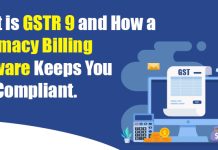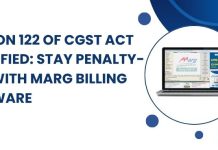Introduction
The Goods and Services Tax (GST) is an indirect tax levied on the supply of goods and services in India. It was introduced on July 1, 2017, to replace a complex network of indirect taxes such as Value Added Tax (VAT), Central Excise Duty, and Service Tax. GST aims to simplify the tax system, reduce tax evasion, and improve the ease of doing business in India. However, there may be instances where taxpayers face difficulties and want to raise a complaint against the GST system. In this blog, we will discuss how to raise a GST complaint and what steps to take to resolve it.
Types of GST Complaints
GST complaints can be broadly categorized into two types – technical and procedural. Technical complaints arise when there is an issue with the GST portal or system, such as the unavailability of the portal, technical glitches, or errors in the GST return filing process. Procedural complaints arise when there is a problem with the procedures followed by the GST authorities, such as the delay in the issuance of refunds, incorrect classification of goods or services, or incorrect application of tax rates.
How to Raise a GST Complaint
If you are facing any issues with the GST system or procedures, you can raise a complaint with the GST authorities. The following are the steps to raise a GST complaint:
- Visit the GST portal: The first step is to visit the official GST portal – https://www.gst.gov.in/. Login using your credentials.
- Click on ‘Services’: Once you are logged in, click on the ‘Services’ tab and select the ‘User Services’ option.
- Click on ‘Raise a Ticket’: Under the ‘User Services’ option, click on ‘Raise a Ticket’ to raise a complaint.
- Select the complaint type: Select the type of complaint – technical or procedural – and provide a brief description of the issue.
- Provide details: Provide all the relevant details, such as your GSTIN, the tax period, the error code, and any other details that may be required to resolve the issue.
- Submit the complaint: Once you have provided all the required details, submit the complaint.
- Track the status: You can track the status of your complaint by clicking on the ‘Track Ticket Status’ option under the ‘User Services’ tab.
Resolving GST Complaints
Once you have raised a GST complaint, the GST authorities will investigate the issue and take necessary steps to resolve it. The following are the steps you can take to ensure that your complaint is resolved:
- Follow up regularly: Follow up regularly with the GST authorities to ensure that your complaint is being addressed.
- Provide additional details: If the GST authorities require additional details or documents to resolve the issue, provide them promptly.
- Escalate the issue: If your complaint is not resolved within a reasonable time, you can escalate the issue to higher authorities, such as the GST Council or the Central Board of Indirect Taxes and Customs (CBIC).
Common Issues Faced by Taxpayers
Some of the common issues faced by taxpayers that may require raising a GST complaint are:
- Technical issues with the GST portal, such as login problems, system errors, slow response time, or mismatch of data between the GSTN and the taxpayer’s records.
- Delay or rejection of refund claims, which can cause financial hardship and affect cash flow for businesses.
- Wrong or excessive levy of tax, such as charging the wrong tax rate, applying tax on exempt goods or services, or not considering input tax credit.
- Lack of clarity or consistency in GST rules and interpretations, which can lead to confusion and disputes.
Tips for Effective Complaints
To ensure that your complaint is heard and resolved effectively, it is important to:
- Be specific and concise in describing the issue and providing relevant details. Avoid making vague or irrelevant statements that may confuse the authorities.
- Provide supporting documents or evidence, such as copies of invoices, receipts, or communication with the GST officials, to back up your claim.
- Keep a record of all communications and actions taken regarding your complaint, such as dates, reference numbers, and names of officials involved. This will help you to follow up and escalate the issue if necessary.
- Stay polite and professional in your language and behavior, even if you are frustrated or angry with the situation. Avoid making personal attacks or threats that may harm your credibility and reputation.
GST Grievance Redressal Mechanism
The GST grievance redressal mechanism provides for the resolution of complaints raised by taxpayers in a timely and transparent manner. The GST authorities have set up a dedicated portal, called the Centralized Public Grievance Redress and Monitoring System (CPGRAMS), to receive and track complaints related to GST. The CPGRAMS portal allows taxpayers to register complaints online and provides a unique grievance registration number (GRN) for each complaint. The authorities are required to acknowledge the complaint within 3 working days and resolve it within 30 days, or provide a valid reason for any delay. If the complaint is not resolved to the satisfaction of the taxpayer, they can approach higher authorities such as the GST Council, the National Anti-Profiteering Authority (NAA), or the Appellate Authority for Advance Ruling (AAAR).
Sample Scenario of GST Complaint
To illustrate the various types of GST complaints and how they can be addressed, here are some sample scenarios:
Technical issue: A taxpayer tries to file GSTR-3B return for a particular month but encounters an error message that says “System error: Please try again later.” The taxpayer waits for a few hours and tries again but gets the same message. The taxpayer then checks the GSTN status and finds that the portal is up and running. The taxpayer suspects that there may be a technical glitch and decides to raise a complaint. The taxpayer logs in to the CPGRAMS portal, selects the option “GST-related issues,” and provides the relevant details such as the error message, the date and time of the attempt, and the GSTIN number. The system generates a GRN and sends an acknowledgement to the taxpayer’s registered email and mobile number. The taxpayer also uploads a screenshot of the error message and a copy of the return. Within 3 working days, the taxpayer receives a response from the GSTN helpdesk, which asks for more information about the issue. The taxpayer provides the additional details and also calls the helpdesk to follow up. Within a week, the issue is resolved, and the taxpayer is able to file the return successfully.
Conclusion
Raising a GST complaint can be a daunting task, but it is essential to ensure that the GST system works smoothly and benefits taxpayers. By following the steps mentioned above, you can raise a complaint and ensure that it is resolved in a timely manner. If you are unsure about the process, you can seek the help of a GST professional or a tax expert.
Read more useful content:
Frequently Asked Questions (FAQ’s)
Q1.) What is a GST complaint?
A GST complaint is a grievance or a problem faced by a taxpayer related to GST registration, returns, refunds, or any other aspect of the GST law, which requires redressal by the concerned authorities.
Q2.) How can I file a GST complaint?
You can file a GST complaint by using the CPGRAMS portal of the government, which provides a platform for lodging online grievances related to GST.
Q3.) What are the types of GST complaints?
The types of GST complaints include technical issues, refund issues, taxation issues, input tax credit issues, mismatch issues, compliance issues, and others.
Q4.) Can I file a GST complaint anonymously?
No, you cannot file a GST complaint anonymously as the portal requires you to provide your name, email, mobile number, and other details for registering the complaint. However, you can choose to keep your identity confidential if you wish to.
Q5.) How long does it take to resolve a GST complaint?
The time taken to resolve a GST complaint depends on the nature and complexity of the issue, the level of escalation required, and the responsiveness of the concerned authorities. However, the CPGRAMS portal has a time limit of 30 days for resolving the complaints.
Q6.) What documents do I need to submit with my GST complaint?
The documents required to submit with your GST complaint vary depending on the type of issue. However, you should keep the relevant GSTIN, return copies, invoices, challans, and other supporting documents ready to provide as and when required.
Q7.) What happens after I file a GST complaint?
After you file a GST complaint, you will receive an acknowledgement from the CPGRAMS portal along with a unique GRN number. The complaint will be forwarded to the concerned department for review and resolution, and you will receive updates on the status of the complaint.
Q8.) Can I appeal against the decision of the GST authorities on my complaint?
Yes, you can appeal against the decision of the GST authorities on your complaint by filing a review application or an appeal with the appropriate appellate authority. You may also approach the courts if required.
Q9.) Do I need to pay any fee for filing a GST complaint?
No, you do not need to pay any fee for filing a GST complaint. The CPGRAMS portal is a free platform provided by the government for registering online grievances.
Q10.) Can I file a GST complaint if I am not registered under GST?
No, you cannot file a GST complaint if you are not registered under GST as the complaint relates to the GST law and its compliance requirements. However, you may approach the relevant authority or forum for redressal of your concerns, if any.






